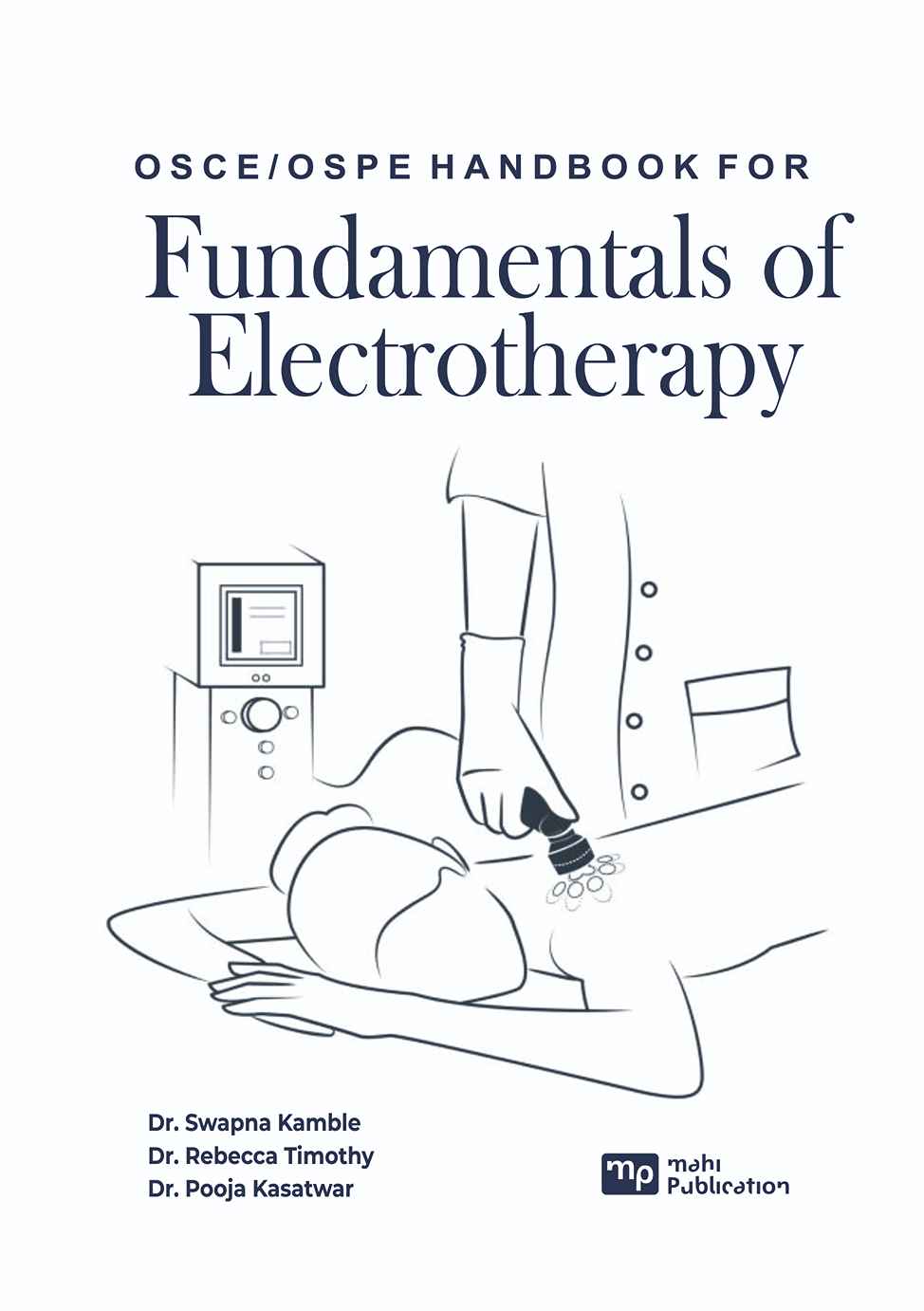OSCE/OSPE Handbook for Fundamentals of Electrotherapy
Authors:
Dr. Swapna Kamble,
Dr. Rebecca Timothy,
Dr. Pooja Kasatwar,
Format: Paperback | Genre : Medical Science | Other Book Detail
Format: Paperback | Genre : Medical Science | Other Book Detail
Introduction: Innervated muscles contract in response to electric because the current causes depolarization of their motor nerves. Denervated muscles will contract in response to long pulses of electricity, lasting for 10 ms or longer. These longer duration pulses depolarize the muscle cell membrane directly. Because denervated muscle membrane does not accommodate, a slow rising stimulus can be used to produce a muscle contraction in it.
Therapeutic electrical currents mostly have balanced bi-phasic waveshape. As it is bi-directional waveshape which results into no ionic effects and charge in the tissue . In contrast, DC pulsed mono-phasic currents and unbalanced bi-phasic waveshape , which are used occasionally for electrical stimulation, result into neural charge in the tissue.
This charge can produce ionic effects. Cations are attracted toward cathode which is negative electrode anions and repels where as anode which is positive electrode attracts repels anions and Cations. Therapeutically this ionic effects can be utilized. For example, a DC can be utilized to repulse the ionized drug molecules which can lead into increase in the depth their trans-dermal penetration.
Book Also Available On
Share:






